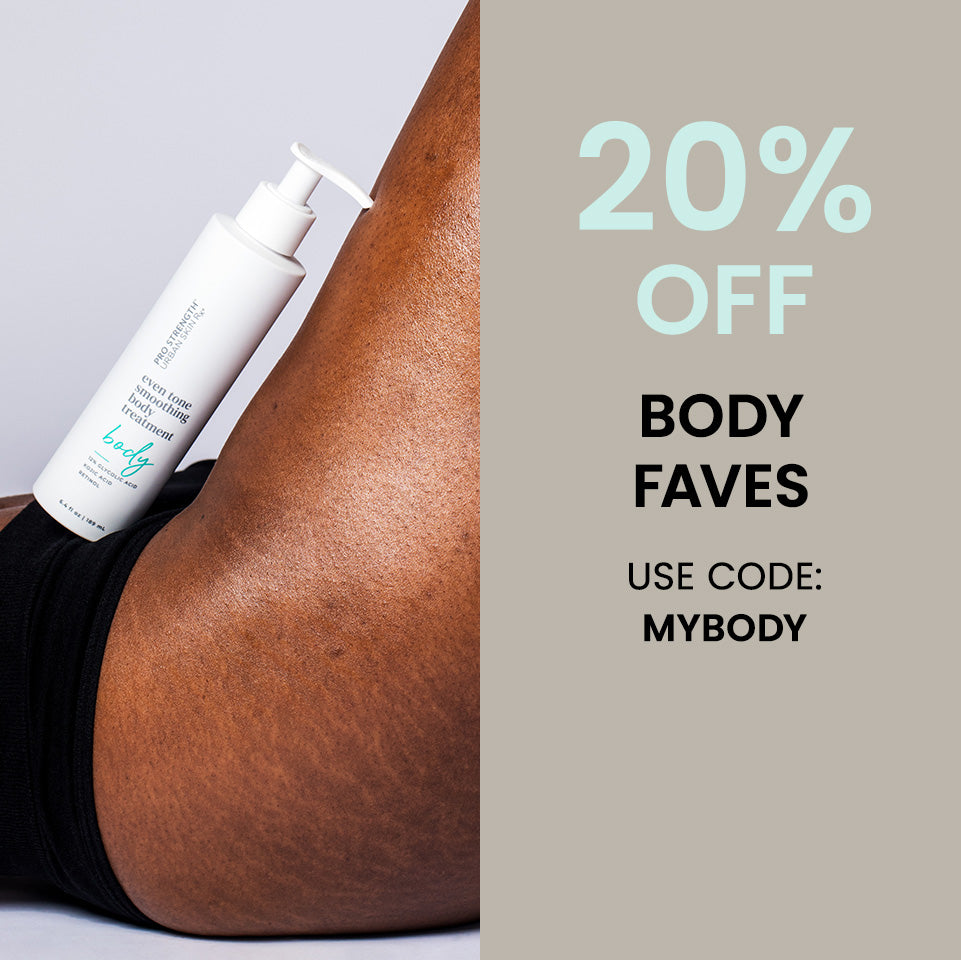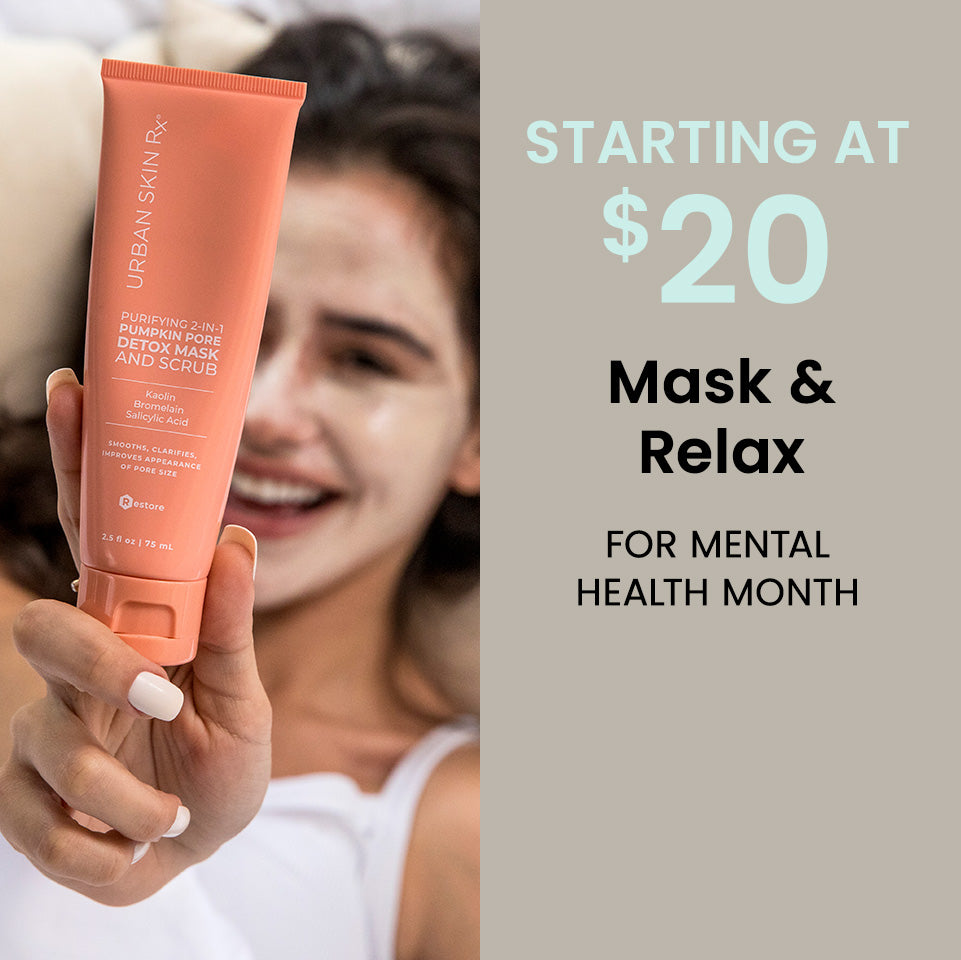What Does Azelaic Acid Do for Skin? 3 Top Benefits

Are you at a loss for achieving an effortless, even-looking glow? Never fear; the even tone experts are here!
With so many factors that can cause dull, uneven skin, we’re sure that everyone’s struggled at some point. It’s normal, but it doesn’t have to be.
Azelaic Acid is a highly effective skincare ingredient that can help you get clear, glowing skin, and it’s available in plenty of over-the-counter products. Read on to learn more about Azelaic Acid and find out some of our tips and tricks on how to get even-looking skin.
What Is Azelaic Acid?
Azelaic Acid is a type of dicarboxylic acid that comes from grains like wheat, barley and rye. Dermatologists frequently prescribe it in high concentrations to help combat discoloration and blemishes — prescription-strength Azelaic Acid creams like Azelex often come in concentrations of 15% or more.
The high-strength formulas usually come as topical gels, creams or foams. However, you can also find lower concentrations of Azelaic Acid in your favorite over-the-counter skin brightening products.
You may feel a little weird putting acid on your face. We’ve all seen movies where high concentrations of acid cause some serious harm. But don’t worry — it’s perfectly safe to put Azelaic Acid on your skin.
Your skin is naturally a little acidic; it has to be to fight off bacteria and free radicals. With that in mind, it makes perfect sense that a little acid would be good for your face! In fact, a good toner with some acid in it can help restore unhealthy skin to radiant beauty.
What Causes Discoloration and Blemishes?
Azelaic Acid mainly combats discoloration and blemishes. But what are these, and what causes them?
Discoloration comes in many forms but ultimately describes skin that is not the color it should be. Common forms include dark spots (AKA hyperpigmentation) and skin redness. These can occur anywhere on your skin but often show up on your sensitive facial skin.
Hyperpigmentation occurs when a compound in your skin called tyrosinase creates too much melanin (or pigment) in one spot. This is usually a response to stress, such as sun damage or harsh products. Dark spots can also refer to age spots or freckles, which some people may not want.
Redness occurs when your skin is irritated. Your skin is a living organ, so there are quite a few things that can irritate it, including sun damage, skincare products, dryness, weather, stress and diet. Often, an uneven skin tone is just your skin telling you that it’s not happy with something in your daily routine.
On the other hand, blemishes can also cause a bit of redness. Blemishes occur when oil and bacteria build up in your pores, causing an infection. They’re pesky, but you don’t have to deal with them if you have the right products on hand.
3 Benefits of Azelaic Acid
There are quite a few skincare ingredients out there, but Azelaic Acid is unique for a few key reasons: it can even out the way your skin looks and minimize the appearance of blemishes all while being gentle enough for sensitive skin.
Even-Toned Glow
If you’d like to even out the appearance of dark spots and redness, then Azelaic Acid may be the ingredient for you. This special acid keeps hyperpigmentation at bay by targeting the source: melanin. Azelaic Acid prevents melanin from over-producing and helps your skin look more even and toned.
This acid can also reduce the appearance of redness. Redness is often caused by irritation and dry skin, which is what Azelaic Acid works to prevent. The ingredient soothes irritation and specifically neutralizes free radicals, an everyday stressor for your skin.
Another way Azelaic Acid can help your skin is by stimulating cell turnover — which basically means that it can help your skin shed old cells and make new ones a lot faster. When your skin cells have a higher turnover, you are less likely to develop irritation. You’re also more likely to see current irritation calm down.
We’ve all had scars before. Sometimes they fade into nothing, and sometimes they stick around for a while. Not everyone wants to get rid of their scars, but if you do, having a greater cell turnover rate can help improve the appearance of your scars.
Azelaic Acid can also keep discolored skin cells from spreading to other parts of your skin. This is especially helpful for anyone who is prone to hyperpigmentation. This way, you make sure that your discoloration stays under control.
Smooth, Clear Skin
Have you ever had a blemish? Those red, uneven areas can be quite tricky to navigate. Luckily, Azelaic Acid employs a three-pronged approach to reducing the appearance of unwanted blemishes.
First, Azelaic Acid helps reduce the presence of current blemishes. This acid is great at deep cleaning your pores to help soothe some of the irritation that can cause blemishes. The ingredient also neutralizes blemish-causing bacteria so that your skin has time to breathe.
Second, Azelaic Acid helps prevent future breakouts. The topical genius works double-time to clear out your pores and chase down the sources of your breakouts. Azelaic Acid also targets keratin, which can be a factor in some blemishes.
Third, the ingredient helps minimize the appearance of blemishes. We know that Azelaic Acid can target discoloration; this even includes the discoloration often associated with blemishes. Azelaic Acid can soothe that redness and make your blemishes harder to see and easier to cover up.
Gentle and All-Natural
If you have sensitive skin, you may have noticed that your skin reacts to some of the harsh chemicals commonly used in skin-brightening products. The good news is that you shouldn’t have to worry about Azelaic Acid irritating your skin. Although any skincare product has the potential for side effects, Azelaic Acid is known for being a gentle alternative to some of the harsher products.
Azelaic Acid is more gentle than even the gentlest of Alpha Hydroxy Acids (AHAs), which include Glycolic Acid and Lactic Acid. It’s even more gentle than Beta-Hydroxy Acids (BHAs) like Salicylic Acid. In fact, Azelaic Acid is so gentle that it’s usually prescribed in higher concentrations for those with sensitive skin.
What Should an Azelaic Acid Skincare Routine Include?
Are you ready to start using Azelaic Acid products in your skincare routine? We have a few tips and tricks to help you get started.
The even tone experts here at Urban Skin Rx® have put together a walkthrough of how to optimize your skincare routine for Azelaic Acid. Using any acidic product on your face requires some special consideration, so we’ve decided to make it easy for you and write out a whole daily routine!
Cleanser
The first step of any routine is a cleanser. Your cleanser should be formulated to fit your skin type if you want the best effects. If you aren’t sure what cleanser is right for you, consult your dermatologist or schedule a virtual consultation with one of our Licensed Aestheticians.
Go ahead and cleanse with warm water and pat your skin dry. Using water that’s too hot and scrubbing at your skin can cause more irritation, so it’s important to treat your skin gently. You should also wash your face every morning, every evening and every time you sweat.
Make sure your cleanser is free of alcohol because Azelaic Acid can make your skin more sensitive to products that contain alcohol. If you’re looking for a cleanser, we recommend our Even Tone Cleansing Bar. This exfoliating cleanser comes in an innovative bar that will help clear off dirt, oil, and dead skin cells — and one of its main ingredients is Azelaic Acid!
Serum
The next step in your even skin routine is an Azelaic Acid serum. Serums are power-packed with healthy ingredients that help keep your skin vibrant and glowing, and you should be using one every night. To use, apply a thin layer to the affected area and wait for it to dry.
For a serum, we recommend our Even Tone Super Glow Serum. This gentle serum combines Kojic Acid, Niacinamide and Azelaic Acid to gently even your skin’s appearance and calm the look of redness or irritation. You can even apply this serum twice a day for maximum effect if tolerated.
When using a serum, make sure that you don’t combine too many ingredients. For instance, if you have a Retinol or Retinoid product that you would like to use, try alternating between the two serums.
Moisturizer
After your serum completely dries, you are ready to apply your moisturizer. Moisturizer is an important step because it helps to lock in that serum and hydrate your skin while it works its magic.
Your moisturizer of choice should match your skin type, as oily skin has different needs than dry skin.
Sunscreen
Finally, you absolutely must apply sunscreen in the mornings. You should also reapply as often as the packaging tells you to because you need to protect yourself every time you’re in the sun. We recommend our Complexion Protection Moisturizer with SPF 30 to help you hydrate while also preventing sun damage. This formula acts as both SPF and moisturizer and is suitable for all skin types.
Azelaic Acid can make your skin especially sensitive to sunlight, so make sure you have a daily sunscreen or a moisturizer with SPF. This way, your skin stays soft, even and hydrated — which is exactly what you want.
Final Thoughts
Azelaic acid is an all-natural acid that is commonly used to brighten the look skin discoloration and improve the appearance of blemishes. The ingredient is gentle and suitable even for sensitive skin, and you can easily incorporate it into your skincare routine.
If you’re ready to hop on the Azelaic Acid train, pick up some products and check out our online glow-up guide for more helpful tips on keeping your skin healthy and glowing.
Engagement Manager







